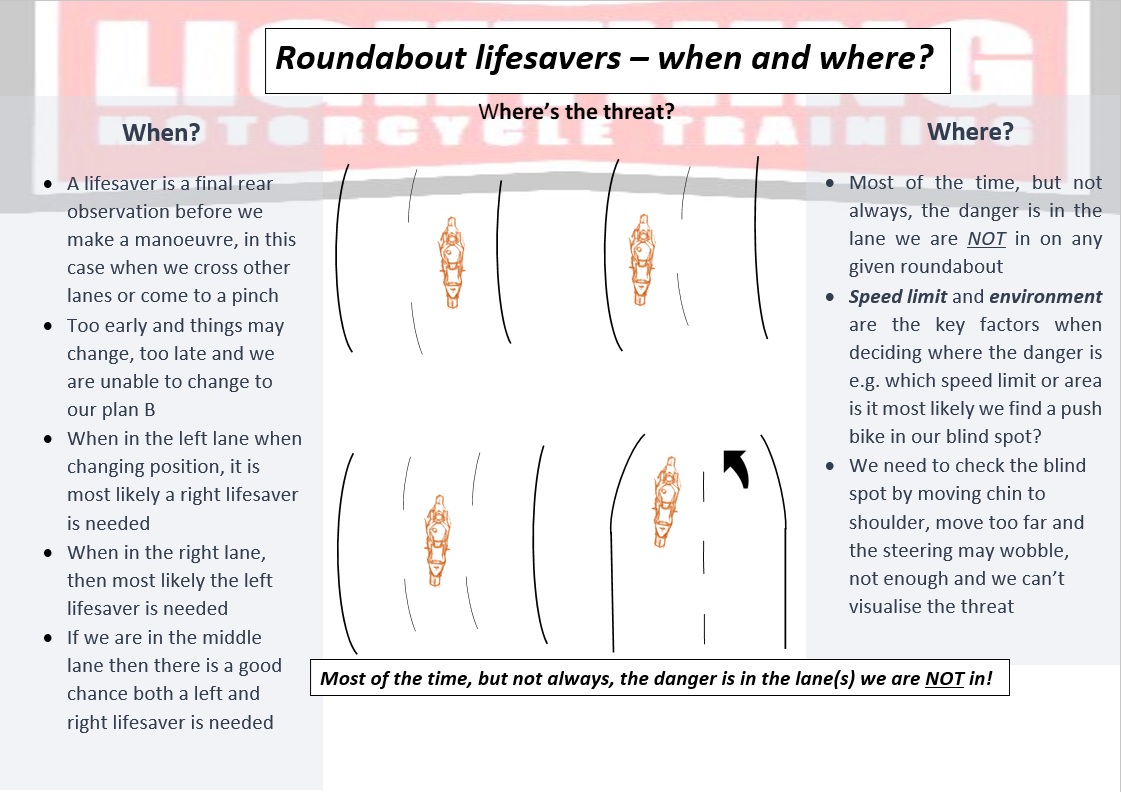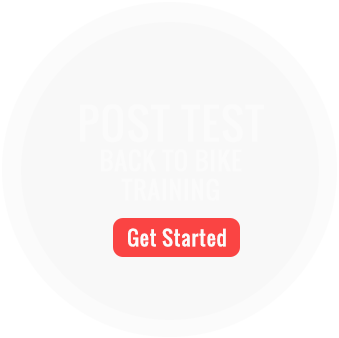Roundabout Lifesavers

Getting observations and lifesavers done correctly on Roundabouts is an important survival skill
Given that you have large numbers of cars, vans and lorries changing direction and moving comparatively quickly roundabouts can be a treacherous place for motorcycles. The Highway Code states: Rule 187 “In all cases watch out for and give plenty of room to – motorcyclists”. Notwithstanding this it is even more important to watch out for yourself.
The three key hazards are:
- Traffic entering the roundabout at speed – this can be mitigated by expecting the hazard and being ready to use the horn and/or brake.
- Traffic changing lane in front of you. This is more unpredictable, however you place yourself more at risk if you use the right hand of two lanes to exit a roundabout (leaving room on the left for people to continue to go round and thereby crossing your path).
- Other road users struggling to understand how the roundabout works. This is particularly the case at “spiral roundabouts” (typically with traffic lights) where traffic is expected to spiral out in a designated lane as it works its way around the roundabout.
Therefore, the purpose of lifesavers on a roundabout are to pre-empt a collision, and they can be in either direction or even both. The following are examples:
- Turning Left (1st exit) – typically to the left looking for cyclists
- 2nd exit (assuming straight ahead) using left hand lane in roundabout – to the right looking for overtaking vehicles
- 2nd exit (assuming straight ahead) using right hand lane in roundabout – to the left looking for vehicles erroneously turning right from the left hand lane.
- 3rd exit (assuming turning right on “normal” roundabout) – to the left looking for vehicles undertaking
- 3rd exit (assuming turning right at “spiral” roundabout) – to the right looking for converging vehicles who have not spiralled
As a good rule of thumb ask yourself – where is the danger? That is the direction to look. Try to avoid being too dogmatic and take a holistic approach, as much will depend on your speed and the speed of others – be flexible and assess the situation for threats.
If you need to change lane i.e. cross broken painted white lines, then always look into the new lane before moving.
Remember the purpose of an observation or lifesaver is to be able to alter your original plan to avoid an accident. So, the timing needs to reflect this. A common fail is students observing into a new lane too late and moving into the path of another vehicle.
Examiners will mark faults if a student changes direction or moves lane without observing even if there is no other vehicle on the roundabout.
It is worth bearing in mind that insurance companies tend to settle accidents on roundabouts (almost regardless of how they happened) on a 50/50 basis. Clearly they feel the responsibility is shared by all parties to avoid an accident.




 Oxford: 01865 777 676
Oxford: 01865 777 676